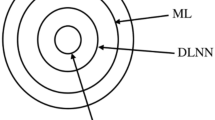Abstract
In order to help the visually impaired and those who need the help of guidance, an indoor navigation service robot system based on vibration tactile feedback is proposed in this paper. Being different from the physical interaction typically used in existing navigation systems, the interaction in the proposed system is achieved by a wearable vibro-tactile bracelet device. Moreover, a human-guidance algorithm is presented based on the basic leader–follower control model. In the guidance, the user is free to decide the linear velocity, and the angular velocity is appropriately adjusted by the vibro-tactile feedback. The feedback is given in the form of the vibrational signal of the bracelet. In the whole process, the distance and orientation deviations between the human and the robot can be controlled in a certain scope, thus the system can ensure that the robot guides the user to the destination accurately. The tactile perception experiments show that the tactile indication method of the bracelet is effective. The trajectory following experiments on the flat ground and the adaptability test on the undulating terrain are performed to verify the feasibility of the system. The user acceptance tests show that the system is user-friendly and less intrusive. Finally, the anti-interference ability of the system is analyzed via experiments to verify the robustness of the system.


















Similar content being viewed by others
References
Baranski P, Polanczyk M, Strumillo P (2010) A remote guidance system for the blind. In: Proceedings of the 12th IEEE international conference on e-Health Networking Applications and Services (Healthcom), pp 386–390
Ward J, Meijer P (2010) Visual experiences in the blind induced by an auditory sensory substitution device. Conscious Cogn 19(1):492–500
Flores G, Kurniawan S, Manduchi R, Martinson E, Morales LM, Sisbot EA (2015) Vibrotactile guidance for wayfinding of blind walkers. IEEE Trans Haptics 8(3):306–317
Altini M, Farella E, Pirini M, Benini L (2011) A cost-effective indoor vibrotactile navigation system for the blind. In: Proceedings of HEALTHINF, pp 477–481
Bhatlawande S, Mahadevappa M, Mukhopadhyay J (2013) Way-finding electronic bracelet for visually impaired people. In: Proceedings of the 2013 IEEE point-of-care healthcare technologies (PHT), pp 260–263
Siagian C, Chang CK, Itti L (2013) Mobile robot navigation system in outdoor pedestrian environment using vision-based road recognition. In: Proceedings of IEEE international conference on robotics and automation, pp 564–571
Kulkarni A, Wang A, Urbina L (2016) Robotic assistance in indoor navigation for people who are blind. In: 2016 11th ACM/IEEE international conference on human–robot interaction (HRI), pp 461–462
Kruijff GJM, Janíček M, Keshavdas S, Larochelle B, Zender H, Smets NJ, Liu M (2014) Experience in system design for human-robot teaming in urban search and rescue. In: Proceedings of field and service robotics, pp 111–125
Lo CW, Wu KL, Lin YC, Liu JS (2014) An intelligent control system for mobile robot navigation tasks in surveillance. Proc Robot Intell Technol Appl 2:449–462
Benavidez P, Jamshidi M (2011) Mobile robot navigation and target tracking system. In: Proceedings of the 6th international conference on system of systems engineering (SoSE), pp 299–304
Ullah I, Ullah Q, Ullah F, Shin S (2012) Mobile robot navigation with distance control. In: Proceedings of IEEE international conference on robotics and artificial intelligence, pp 61–67
Scheggi S, Aggravi M, Morbidi F, Prattichizzo D (2014) Cooperative human-robot haptic navigation. In: Proceedings of IEEE international conference on robotics and automation, pp 2693–2698
Scheggi S, Morbidi F, Prattichizzo D (2014) Human-robot formation control via visual and vibrotactile haptic feedback. IEEE Trans Haptics 7(4):499–511
Galatas G, McMurrough C, Mariottini GL, Makedon F (2011) eyeDog: an assistive-guide robot for the visually impaired. In: Proceedings of the 4th international conference on pervasive technologies related to assistive environments, ACM, p 58
Karuei I, MacLean KE, Foley-Fisher Z, MacKenzie R, Koch S, El-Zohairy M (2011) Detecting vibrations across the body in mobile contexts. In: Proceedings of the SIGCHI conference on Human factors in computing systems, ACM, pp 3267–3276
Gemperle F, Hirsch T, Goode A, Pearce J, Siewiorek D, Smailigic A (2003) Wearable vibro-tactile display. Technical report, Carnegie Mellon University
Riener A (2010) Sensor–actuator supported implicit interaction in driver assistance systems. Vieweg+ Teubner
Das AK, Fierro R, Kumar V, Ostrowski JP, Spletzer J, Taylor CJ (2002) A vision-based formation control framework. IEEE Trans Robot Autom 18(5):813–825
Desai JP, Ostrowski J, Kumar V (1998) Controlling formations of multiple mobile robots. In: Proceedings of IEEE international conference on robotics and automation, vol 4, pp 2864–2869
Nomdedeu L, Sales J, Cervera E, Alemany J, Sebastia R, Penders J, Gazi V (2008) An experiment on squad navigation of human and robots. In: Proceedings of the 10th IEEE international conference on control. Automation, robotics and vision, pp 1212–1218
Saez-Pons J, Alboul L, Penders J (2011) Experiments in cooperative human multi-robot navigation. In: Proceedings of IEEE international conference on robotics and automation, pp 1–4
Arechavaleta G, Laumond JP, Hicheur H, Berthoz A (2008) On the nonholonomic nature of human locomotion. Autonom Robots 25(1–2):25–35
Vogels IM, Kappers AM, Koenderink JJ (1996) Haptic aftereffect of curved surfaces. Perception 25(1):109–119
Scheggi S, Talarico A, Prattichizzo D (2014) A remote guidance system for blind and visually impaired people via vibrotactile haptic feedback. In: Control and automation (MED), 22nd Mediterranean conference, pp 20–23
Ni D, Song A, Tian L (2015) A walking assistant robotic system for the visually impaired based on computer vision and tactile perception. Int J Soc Robot 7(5):617–628
Acknowledgements
This study was founded by National Natural Science Foundation of China (Grant Number 61375076).
Author information
Authors and Affiliations
Corresponding author
Ethics declarations
Conflict of interest
The authors declare that they have no conflict of interest.
Rights and permissions
About this article
Cite this article
Peng, H., Song, G., You, J. et al. An Indoor Navigation Service Robot System Based on Vibration Tactile Feedback. Int J of Soc Robotics 9, 331–341 (2017). https://doi.org/10.1007/s12369-017-0403-1
Accepted:
Published:
Issue Date:
DOI: https://doi.org/10.1007/s12369-017-0403-1




